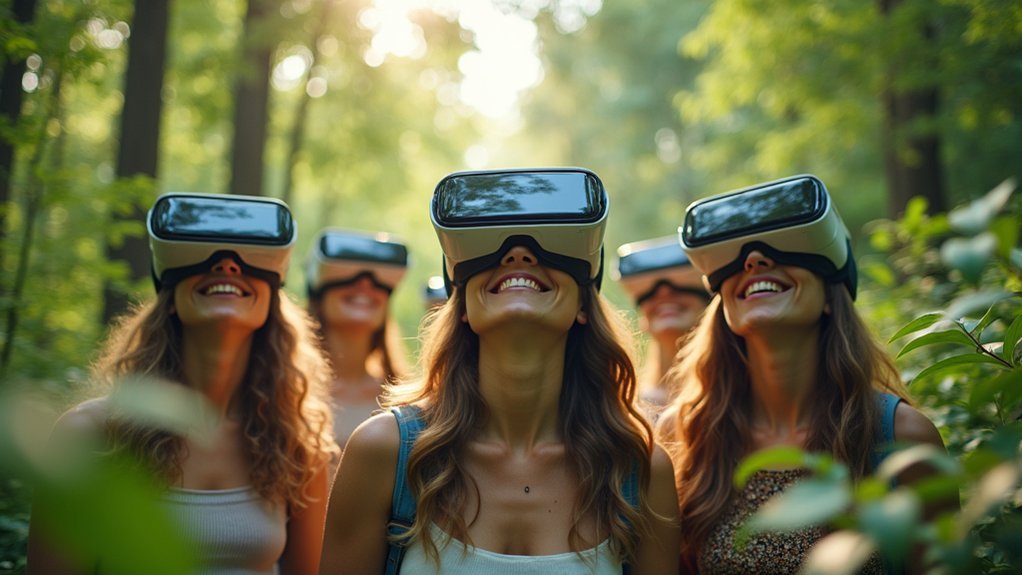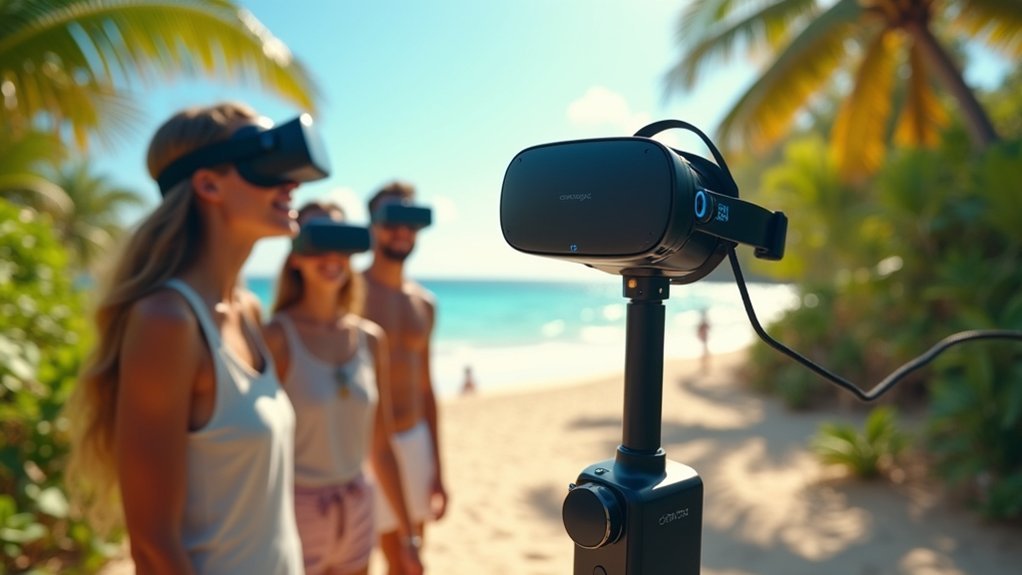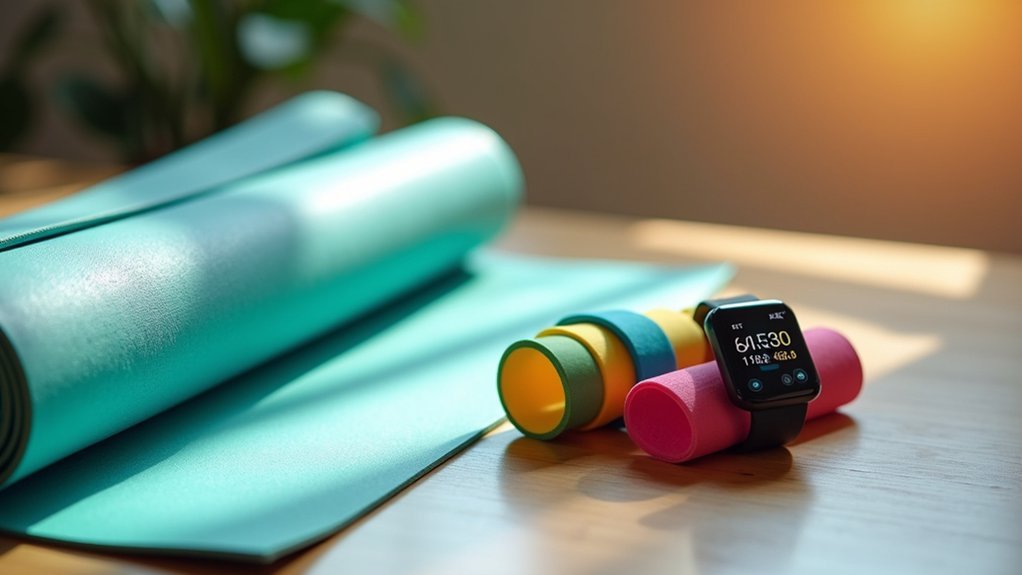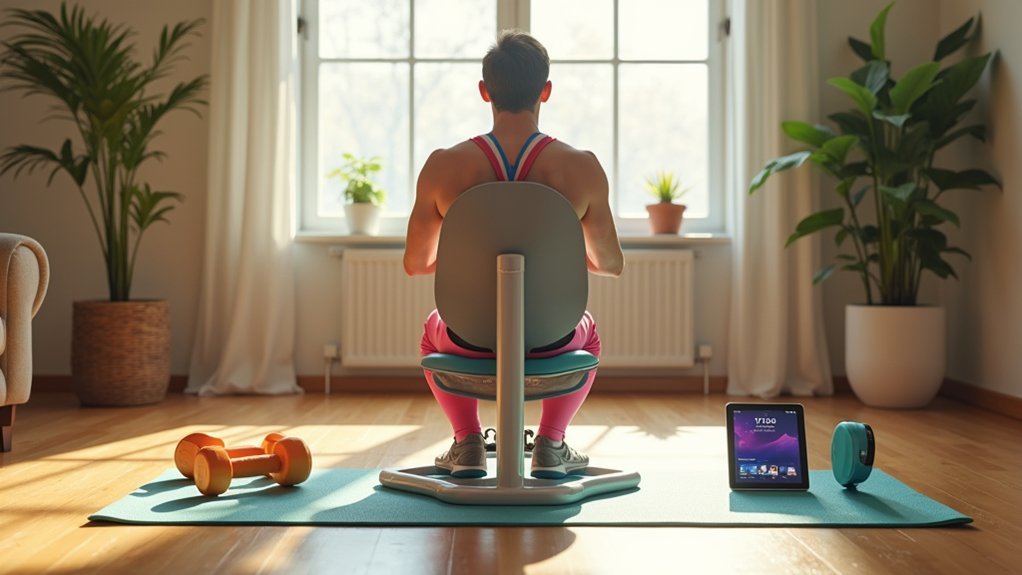You’ll want 360 cameras for Oculus viewing because they capture authentic, all-around footage that transforms your headset into a portal for truly immersive experiences. Unlike traditional cameras, they let you naturally look up, down, left, and right within virtual spaces, creating engaging worlds that transport you beyond physical limitations. With high-resolution capabilities up to 8K and advanced stabilization features that minimize motion sickness, these cameras bridge real-world scenes with virtual reality. Continue exploring to discover which specific models deliver the best performance.
Immersive Experience That Bridges Reality and Virtual Worlds

When you step into a virtual world through your Oculus headset, 360 cameras serve as the bridge that transforms real-world scenes into immersive experiences you can explore from every angle.
360 cameras create the seamless bridge between reality and virtual worlds, transforming ordinary moments into fully explorable immersive experiences.
Unlike traditional cameras that capture flat footage, these devices record everything around you, creating content that feels authentic when viewed in VR.
You’ll find yourself truly present in captured moments, whether you’re revisiting family gatherings or exploring distant locations.
The technology lets you look up, down, left, and right naturally, just as you’d in real life.
This complete visual freedom makes 360 cameras invaluable for creating memories and experiences that transport you beyond your living room into worlds that feel genuine and engaging.
Superior Video Quality and Resolution for VR Headsets
While traditional cameras might suffice for regular viewing, your Oculus headset demands exceptional video quality to deliver the crisp, detailed visuals that make VR experiences truly compelling.
Professional 360 cameras achieve 8K resolution or higher, guaranteeing stunning clarity when you’re immersed in virtual environments. You’ll want to prioritize stereoscopic 3D-360 formats over monoscopic alternatives since they provide depth perception and double the resolution for more lifelike experiences.
When selecting equipment, consider models like the Insta360 One RS One Inch Edition, which offers superior low-light performance and high dynamic range for vibrant footage.
Don’t overlook frame rates either – 60fps guarantees smooth playback without uncomfortable judder that can ruin your VR sessions.
Enhanced Stabilization Features for Smooth VR Playback

High-resolution footage means nothing if your VR experience makes viewers queasy from shaky, unstable video. That’s where enhanced stabilization features in 360 cameras become game-changers for Oculus viewing.
| Feature | Benefit |
|---|---|
| Advanced stabilization technology | Smooth, steady footage for immersive VR |
| Horizon leveling | Maintains straight perspective on roll axis |
| Spherical format capture | More data for reduced jitter and smoother playback |
| Invisible selfie stick effect | Seamless viewing without visible equipment |
| Action-ready stabilization | Perfect for dynamic environments and movement |
These enhanced stabilization features minimize motion sickness risks that plague VR experiences. You’ll capture smooth footage even in challenging conditions, ensuring your Oculus viewers enjoy comfortable, immersive sessions without the nausea typically associated with shaky 360-degree content.
Compatible Camera Models and Performance Comparison
Several standout camera models have proven their worth for Oculus viewing, each bringing distinct advantages to your VR content creation arsenal.
The Xiaomi Mi Sphere 360 and Yi360 excel in user-friendliness, allowing direct uploads to YouTube VR and seamless Facebook integration with Oculus Gallery access.
For higher-end performance, the Insta 360 X3 delivers impressive 5.7K video at 30fps, while the GoPro Max provides exceptional Hypersmooth stabilization for professional-quality content.
However, the Insta 360 One RS One Inch Edition stands out as the premium choice at $799, offering superior photo and video quality with exceptional low-light performance.
While all camera models perform admirably in outdoor, well-lit conditions, the Insta 360 One RS consistently outperforms competitors in indoor and dimly lit environments, delivering enhanced brightness and clarity.
Reframing Capabilities for Dynamic Viewing Angles

You’ll discover that 360 cameras excel at post-capture frame adjustment, letting you transform any section of your spherical footage into traditional flat video formats perfect for Oculus viewing.
This flexibility means you can create multiple perspectives from a single recording, switching between wide establishing shots, intimate close-ups, and dramatic POV angles without sacrificing image quality.
The seamless movement shifts between these different viewpoints create an engaging viewing experience that keeps your audience immersed in the virtual environment.
Post-Capture Frame Adjustment
Although 360 cameras capture everything around you simultaneously, their true power emerges during post-production when you can reframe your footage to create entirely different viewing experiences.
Post-capture frame adjustment lets you transform a single recording into multiple perspectives without sacrificing quality. You can shift from wide establishing shots to intimate close-ups, or switch between POV angles and traditional third-person views.
This flexibility proves invaluable when creating content for your VR headset. You’re able to focus on specific moments that matter most, adjusting the field of view to enhance dramatic impact.
The ability to change aspect ratios means you can optimize the same footage for various platforms while maintaining that professional, stabilized look that makes 360 cameras indispensable for immersive content creation.
Multiple Perspective Creation
When you’re creating content for Oculus viewing, 360 cameras reveal extraordinary reframing possibilities that transform a single recording into countless dynamic perspectives.
You’ll capture everything simultaneously, then decide which angles tell your story best during post-production. This means you’re not limited to one viewpoint—you can extract multiple scenes from the same footage, switching between wide establishing shots and intimate close-ups seamlessly.
You can reframe your content into any aspect ratio without quality loss, making it perfect for various platforms.
The invisible selfie stick effect keeps your equipment hidden while you film yourself from multiple angles. Advanced stabilization guarantees your reframed perspectives remain smooth and professional, while creative techniques like tiny planet effects add engaging visual variety to your Oculus content.
Seamless Movement Transitions
Since 360 cameras capture everything around you simultaneously, you can create fluid camera movements during post-production that would be impossible with traditional filming equipment.
You’ll achieve seamless shifts between different viewpoints by reframing your 360-degree video footage, transforming static scenes into dynamic storytelling experiences.
The horizon leveling technology keeps your footage stable on the roll axis, ensuring smooth playback that won’t cause discomfort for Oculus viewers.
You can craft cinematic pans, dramatic reveals, and flowing camera movements simply by adjusting the viewing angle during editing.
This reframing capability lets you guide viewers’ attention naturally through scenes, creating engaging narratives that feel professionally directed.
Your audience remains immersed while experiencing smooth, intentional camera work that enhances the virtual reality environment without jarring shifts.
Technical Specifications That Matter for Oculus Users
While many 360 cameras flood the market with impressive marketing claims, you’ll need to focus on specific technical specifications that directly impact your Oculus viewing experience.
Start with resolution – you’ll want at least 5.7K capture capability, though 7K resolution provides even better clarity and reduces pixelation in VR environments.
Frame rate matters considerably; aim for minimum 60fps to eliminate judder during fast-moving scenes.
Stereoscopic 3D capabilities, like those found in the Insta360 Pro 2, add essential depth perception that transforms flat 360 footage into truly immersive experiences.
Don’t overlook stabilization and low-light performance, as these features guarantee smooth, high-quality footage across diverse shooting conditions that you’ll commonly encounter.
User Experiences and Real-World Testing Results
Actual users consistently praise the seamless integration between popular 360 cameras and Oculus headsets, with models like the Xiaomi Mi Sphere and Yi360 delivering effortless content transfer that lets you dive straight into your captured experiences.
Real-world testing reveals significant performance differences across models:
Testing across multiple 360 camera models shows dramatic differences in VR performance and integration capabilities.
- Insta 360 One RS – Delivers superior lighting and sharpness for high-quality 360-degree videos that truly shine in VR environments.
- GoPro Max – Voice command functionality enables hands-free operation, perfect for capturing immersive content without interruption.
- Insta 360 X3 – Waterproof design excels during outdoor adventures while maintaining exceptional footage quality for Oculus viewing.
- Export capabilities – Users love how easily vacation memories transfer to VR platforms, creating immersive experiences that let you relive special moments.
Choosing Between Monoscopic and Stereoscopic Formats
How should you decide between monoscopic and stereoscopic formats for your Oculus viewing experience? Your choice depends on your priorities and resources.
Monoscopic 360 video offers simplicity and efficiency—it’s less resource-intensive to produce and generates smaller file sizes. However, you’ll sacrifice visual quality since monoscopic formats typically deliver half the resolution of stereoscopic content.
Stereoscopic formats create superior immersion through 3D depth perception, making your VR experience more engaging and lifelike. The side-by-side fisheye lens setup enhances realism considerably.
You’ll need high-end equipment with six or more lenses targeting 8K resolution, resulting in larger data volumes.
Consider your intended experience: choose monoscopic for budget-conscious projects requiring basic 360 coverage, or select stereoscopic for premium VR experiences demanding maximum engagement and visual fidelity.
Frequently Asked Questions
What Are the Benefits of 360 Cameras?
You’ll capture immersive experiences in all directions, create flexible content that’s easily reframed, enjoy smooth stabilized footage, relive moments interactively, and access monetization opportunities through virtual tours and stock footage sales.
What Is the Difference Between VR Camera and 360 Camera?
You’ll find VR cameras create stereoscopic 3D content with depth perception using multi-lens rigs, while 360 cameras capture flat, monoscopic video through dual fisheye lenses that’s easier to produce.
What Is the Disadvantage of a 360 Camera?
You’ll face image stitching problems creating visible seams, poor low-light performance from small sensors, massive storage requirements, and cumbersome designs that aren’t portable for active shooting scenarios.
Do You Really Need a 360 Camera?
You don’t absolutely need a 360 camera, but you’ll miss creating truly immersive VR content. If you’re passionate about capturing experiences for Oculus viewing and sharing interactive memories, it’s worthwhile.





Leave a Reply